The Polar code was adopted as the control channel code of the 5G eMBB scene. These two days were continuously used by this message to rehearse.
However, as media reports continue to ferment, the truth has changed in style during the word of mouth and mouth. There are many exaggerations and false suspicions. Xiao Bian finally couldn't stand still, but also wanted to confide in the dim sum. He hoped to stand as objectively as possible. , In this impetuous world, a little insignificant sound, the voice of a communications engineer.
The incident goes through us again...
From November 14 to November 18, 2016, 3GPP RAN1 #87 conference was held in Reno, USA. One of the contents of this conference was to determine the channel coding scheme for 5G short code blocks. Among them, three short code coding schemes were proposed: Turbo code, LDPC code, and Polar code.
With regard to the contention between these three coding schemes, this is already the second contest of the 5G standard. At the meeting held in Lisbon, Portugal on October 14, 2016, the LDPC code defeated the Turbo code and Polar code and was adopted as a long code block coding scheme for the data channel of the 5G eMBB scenario.
In this context, the debate on the short code block coding scheme is more intense this time. Because the LDPC code has won the next game, considering the implementation complexity, the entire mobile communication system adopts a single coding scheme to facilitate 5G deployment. For example, 3G and 4G use Turbo codes. It is estimated that more people will support LDPC codes. .
As a result, LDPC codes dominated by U.S. companies are likely to dominate the 5G world, while Huawei and other Chinese companies dominate the Polar code will come to naught.
Due to the loud voice of abandoning the Turbo code, after the last meeting failure, it can be said that the basic trend of the Turbo code has gone. This 5G code battle finally evolved into a Boxing Contest between Polar code and LDPC code, and a boxing hegemony between China and the United States. Match.
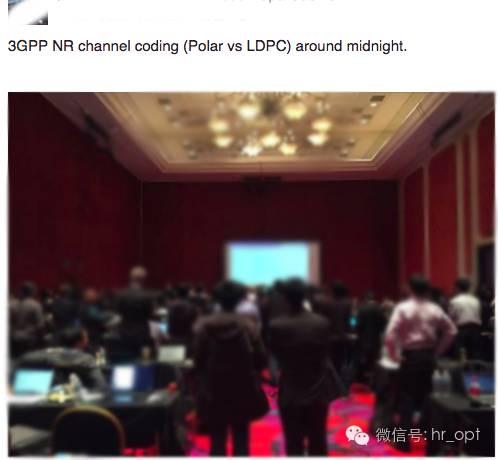
Eventually, after a continuous day and night of fierce battles, the Polar code finally regained one game on the 5G core standard, becoming a control channel coding scheme for the 5G eMBB scenario.
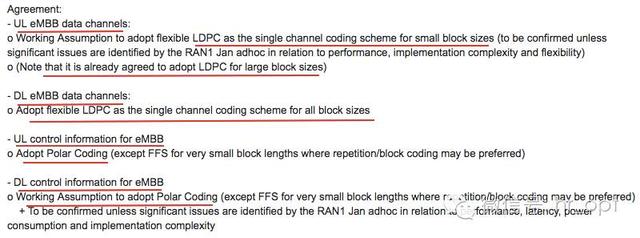
Since then, after two battles, the Polar code and the LDPC code have divided the world in 5G eMBB scenarios. The former is a signaling channel coding scheme and the latter is a data channel coding scheme. The Polar code and the LDPC code have historically entered the cellular mobile communication system, and in the 3G and 4G eras, the Turbo codes that accompany us for many years lost another game, leaving a lonely and lonely back.
This is indeed an exciting news. If I say hard to describe it, I think it is not an exaggeration.
This is absolutely good for Huawei and Chinese companies that dominate the Polar code. After all, years of R&D investment in the Polar code have finally come a long way.
However, we have seen reports from some media, and I would say it with exaggeration.
1 is not "take 5G era"
In the 5G eMBB scenario, Polar is a signaling channel coding scheme, and an LDPC code is a data channel coding scheme. At the same time, there is still a lot to follow.
The eMBB scenario we mentioned in the previous article is just one of the scenarios for 5G applications. 3GPP defines 5G three scenarios: eMBB, mMTC and URLLC. eMBB corresponds to high-volume mobile broadband services such as 3D/Ultra-HD video, mMTC corresponds to large-scale Internet of Things services, and URLLC corresponds to unmanned driving. Industrial automation and other services require low latency and high reliability.
The coding scheme adopted this time is for the eMBB scenario. The channel coding scheme under the URLLC scenario will also be decided later, and finally the mMTC scenario will be decided (estimated in the first quarter of 2017). Although this adoption of the Polar code laid a solid foundation for the follow-up standard discourse power, the revolution has not yet been successful and comrades still need to work hard.
2 Polar code is not Huawei, LDPC is not high-pass
This starts with the history of channel coding.
The Turbo code was invented by French scientists C. Berrou and A.Glavieux. Since 1993, the field of communications began its research. Subsequently, Turbo codes were adopted by 3G and 4G standards.
The LDPC code was proposed by Robert Gallager, a professor at MIT, in 1962. This was the earliest proposed channel coding approach to Shannon's limit. However, it was difficult to overcome the computational complexity and was forgotten. Until 1996 it caused concern in the communications field. Later, LDPC codes were adopted by the WiFi standard.
The Polar code was proposed by Professor E. Arikan of the University of Beerkin in Turkey in 2007 and began to attract attention in the communications field in 2009.
In short, channel coding is a theory originally created by mathematicians, and communication is followed by mathematicians. Based on their theoretical basis, they continue to study and experiment and put it into practical use.
Why do some companies support Polar codes, and some companies support LDPC codes? This is like placing a bet on a certain coding technology and starting to study it. Once the bet is won, my research results can be quickly applied. Once lost, I can only start from scratch. For example, Huawei chose the Polar code, and 5G also chose the Polar code, which means that Huawei has more influence in the 5G field. Of course, many patents must have been accumulated in the study.
Therefore, although the Polar code won, personally, the media cannot ignore the contributions of mathematicians because they are too excited. They can't even be crowned and admired. Some things do not have borders.
3 Why did 5G adopt Polar code?
This subtitle should be called: Why did 5G adopt Polar code and LDPC code? Why did you give up the Trubo code?
First talk about what channel coding is. When we pick up the mobile phone and swipe the circle of friends, data is transmitted between the mobile phone and the base station through wireless signals. Due to radio interference, weak coverage, etc., the data sent by our mobile phone and the data received by the base station are sometimes inconsistent. For example, our mobile phone sends 1 0 0 1 0 while the base station receives 1 1 0 1 0. For error correction, mobile communication systems introduce channel coding techniques.
In channel coding, simply speaking, we insert redundant bits in a K-bit data block to form a longer code block. The length of this code block is N bits, N>K, and NK is used for detection and Error-corrected redundant bits, the coding rate R is K/N. A good channel coding is the theoretical limit of unlimited access channel capacity at a certain coding rate.
In the past few decades, there have been two channel coding techniques near the capacity limit: LDPC and Turbo codes, which were adopted by 3G and 4G communication standards and WiFi standards, respectively. In 2007, the Turkish professor E. Arikan proposed the Polar code, which is known as the only type of coding method that can be found so far to reach the Shannon limit.
Therefore, these three kinds of excellent coding techniques have entered the eyes of the 5G coding standard and triggered a competition.
Why is this competition so fierce? It is the KPI's trouble.
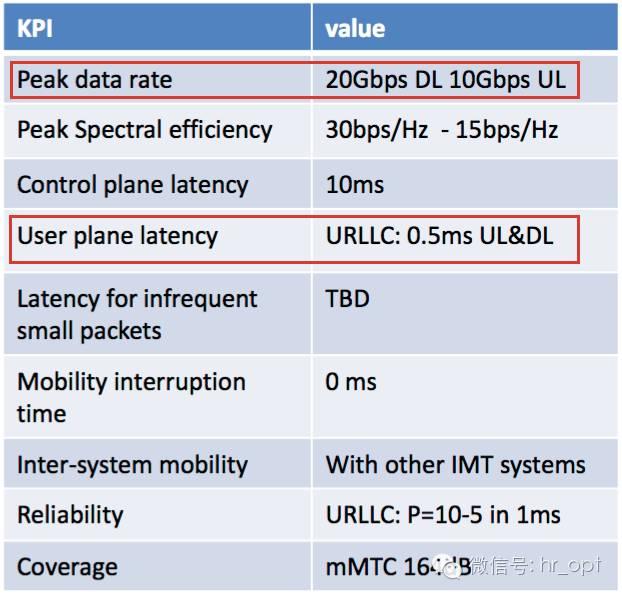
In the 5G NR (New Radio) KPI, the peak rate is 20 Gbps and the user plane delay is 0.5 ms (URLLC).
This KPI is set too high, and has increased 20 times on the basis of 4G. Reporting leadership is not well done.
How hard is it? The downlink peak rate requirement of the 5G NR is 20 Gbps. Since each bit received by a cell phone (or a base station) goes through a channel decoder, 20 Gbps is equivalent to a decoder processing a few billion bits of data per second.
For example, 20 Gbps means that the decoding throughput T is 20 Gbps. Assume that the number of decoding iterations I is 10, and the processor clock frequency F is 500 MHz. Then, I *T /F = 10*20G/ 500M=400, which means that 400 processors need to work in parallel.
(Remark: The decoder is the most difficult part of channel coding)
This is one of the reasons why many people choose to abandon the Turbo code used in the 3G and 4G eras because the maximum rate of 4G is only 1 Gbps. The traditional Turbo code is decoded through iterative decoding, which is essentially derived from the serial internal structure. Therefore, some people think that Turbo encountered a bottleneck when it encountered a higher rate of 5G. For example, the LDPC decoder is based on a parallel internal structure, which means that the decoding can be processed simultaneously in parallel, not only can handle a large amount of data, but also reduce the processing delay. Although external parallelism can be used, it causes delay problems.
For time delays, because of the instinctive nature of the technology house, please allow me to look again.
The URLLC application scenario of 5G NR requires a user plane delay of 0.5ms, which is one-twentieth of 4G 10ms. The reason why such a high delay is required is because when we experience services such as augmented reality, remote control, and games, we need to send it to the cloud for processing and send it back in real time. The time delay of this round-trip process must be low enough and low enough. The user cannot detect it. In addition, machines are more sensitive to delays than humans, and require higher latency, especially for 5G networking, automated factories, and remote robots.
The delay of 0.5ms in the air interface means that the delay of the physical layer cannot exceed 50μs, while the delay of the physical layer is influenced by other factors (such as synchronization) in addition to the decoding, which requires that the processing delay of the decoding must be lower than 50μs, the lower the better.
Generally speaking, this is like the Chinese New Year flight. There are too many people. We must transfer hundreds of millions of Chinese people from south to north and from east to west once. The “data volume†is too large. This requires more flights and faster sailing. speed.
The "flight company" 5G NR said that Yamanashi Yamada, and the channel code indicated that the pressure was greater and it was transmitted in layers.
However, this pressure is not enough, 5G said it can resist.
Just now we talked about that 3GPP has defined 5G three scenarios: eMBB, mMTC, and URLLC. These scenarios are applicable to 5G AR, VR, Vehicular, large-scale Internet of Things, high-definition video, and other applications, compared with 3/4G. Voice and data services, 5G can be more busy.
This imposes higher requirements on 5G channel coding and needs to support wider code block lengths and more coding rates. For example, short code blocks are applied to the Internet of Things, long code blocks are used in high-definition video, and low coding rates are applied to sparsely populated rural sites in base stations, and high coding rates are used in dense urban areas. If everyone uses the same coding rate, this can result in wasted bits of data and waste of spectrum resources. This is called coding flexibility.
In addition, 5G has to guarantee higher reliability of communications. For LTE, the initial transmission rate is 10% for normal data. After several retransmissions, the block error rate is less than 1%. However, 5G requires that the block error rate be reduced to one hundred thousandth. This means that of the 100,000 code blocks, only one error can be committed by the channel decoder, and at most one block cannot be corrected.
In summary, the factors that determine which encoding method 5G uses are: decoding throughput, delay, error correction capability, flexibility, and implementation complexity, maturity, and backward compatibility.
Comparing the decoding throughput, latency, error correction capability, flexibility, and implementation complexity of the three encodings, who is stronger?
Xiao Bian looked at the latest large number of documents and the result was that he was confused and obsessive. This problem is too complicated. The public has said that the public and the rational woman are reasonable.
For example, some people believe that Turbo codes have reached a bottleneck and cannot handle high speeds of 20Gbps. However, manufacturers have proven that Turbo decoders based on fully parallel designs can achieve decoding throughput of up to 21.9 Gbps and processing delays of up to 0.24μs. This can also meet the 20Gbit rate requirement of 5G NR.
For example, if the computational complexity is measured by the total number of Max, Min, and Add operations performed by the decoder when decoding each bit, it is thought that the Polar code and the LDPC code are superior to the Turbo code in computational complexity.
For example, some people say that Turbo is not flexible enough. However, it was pointed out that LTE Turbo code has a code block length from 40 to 6144, a total of 188 types, which can support different services, and uses multiple parallel processors to simultaneously perform code block decoding. Turbo code can be more flexible to support different code block lengths.
...
Xiao Bian tried to find the reason for choosing Polar code or LDPC code from a technical point of view. However, his ability was limited and he made himself a gray-headed person.
Well, we look at maturity and backwards compatibility.
The Turbo code was adopted by the 3/4G standard, LDPC was adopted by the WiFi standard, and the Polar code appeared later, and there was no standard before 5G. In this respect, the Polar code is less mature.
However, Huawei expressed dissatisfaction that before the 5G coding standard dispute, there was an article in the overseas communication circle that was mad. Huawei said that the Polar code achieved a 5G rate of 27 Gbps, indicating that there is no problem in satisfying the 5G demand.
As for backward compatibility. 5G NR is a brand-new wireless technology. It is a replacement. It is not like 2G->2.5G or 4G->4.5G. It can be upgraded on the current network. This is for operators to buy new base station equipment. Therefore, it is not necessary to use it. Consider backward compatibility.
However, for the terminal is another matter. The current 4G handsets support 2G and 3G. Similarly, 5G handsets will also need to support 3G and 4G. Turbo codes are used for 3G and 4G. If 5G also uses LDPC or Polar codes, this means that the handset must use two sets of hardware design. The decoder is an important part of the entire baseband processor, occupying nearly 72% of the baseband processing. Hardware resources and power consumption may result in slightly higher costs for 5G terminals, and may also slightly lengthen the time for 5G commercialization.
However, there is an old saying that a sharp knife does not mistakenly cut the firewood. If this coding scheme is good enough and has great potential, then what's the relationship between 5G lately is nothing more than spending more time for a better experience.
So, as to why 5G adopts Polar code, our conclusions are:
Technical analysis does not have any use.
Because, this standard dispute, in our opinion, has already surpassed the boundaries of technology, but the contest of comprehensive strength and discourse power.
The fact that the Polar code will eventually win can only show the rise of China's communications and its international status has obviously improved.
On the road, go together!
This article from the Tencent News client from the media, does not represent the views and positions of Tencent News
[This article comes from the Tencent News client from the media, does not represent the views and positions of Tencent News. 】
12V 100Ah Bluetooth Lithium Battery
What is UFO Lithium Battery with Bluetooth Technology?
The Bluetooth technology incorporated with the LiFePO4 battery introduces a new way of using the battery. It allows users to monitor battery status and control battery health easily. At the heart of each UFO LiFePO4 battery, it can be equipped with hardware and software BMS to provide battery protection to maximize battery life, performance, and safety. With a 1/3 Weight of lead-acid battery, space-saving size, the UFO Bluetooth Lithium Battery could be an ideal replacement for conventional lead-acid batteries. It can charge a lot quicker and maintain a longer lifespan.
Lifep04 Battery Pack,Home Storage Battery,Solar Lifepo4 Battery,Powerwall Battery Pack
Bluetooth Advantages:
1. Suitable for complex locations or critical applications2. Easy battery monitoring
3. Checking battery status through Smartphone
How to use?
After downloading a Bluetooth App on the smartphone, and connecting the lithium battery to the Bluetooth App, users are able to locate the UFO batteries quickly with no need of the Internet. It helps save the time for battery monitoring. With a UFO Bluetooth Series Lithium battery on hand, you are able to get the real-time data of lithium batteries through an app on your smartphone.The Bluetooth App allows users to get the battery performance easily, including
· The state of charge
· Battery voltage
· Battery temperature
· Battery current
· Battery cyclesThe built-in BMS (battery management system) monitors the overall battery health and avoid the potential battery issues so as to optimize battery performance, prolong battery lifespan and ensure battery safety. When purchasing lithium batteries from UFO POWER, you can be confident that your batteries will work perfectly whenever you need them.
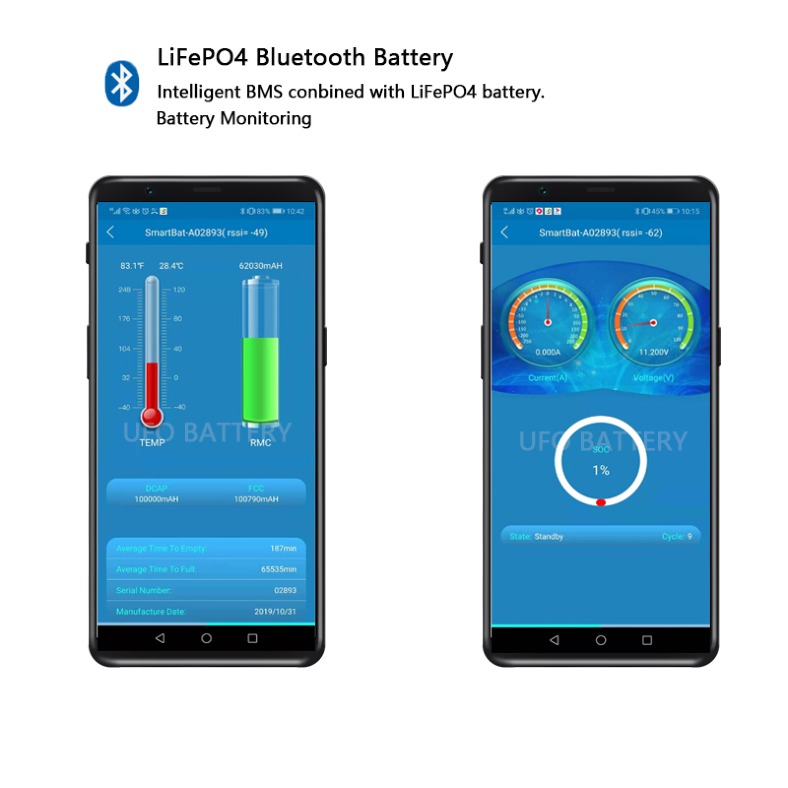
Applications
The UFO Lithium batteries with Bluetooth are available whenever you need them most.The Bluetooth series can be used for a wide range of applications, including solar energy storage, backup batteries, recreational vehicle storage, camping, security system, medical, emergency and other energy storage demands.
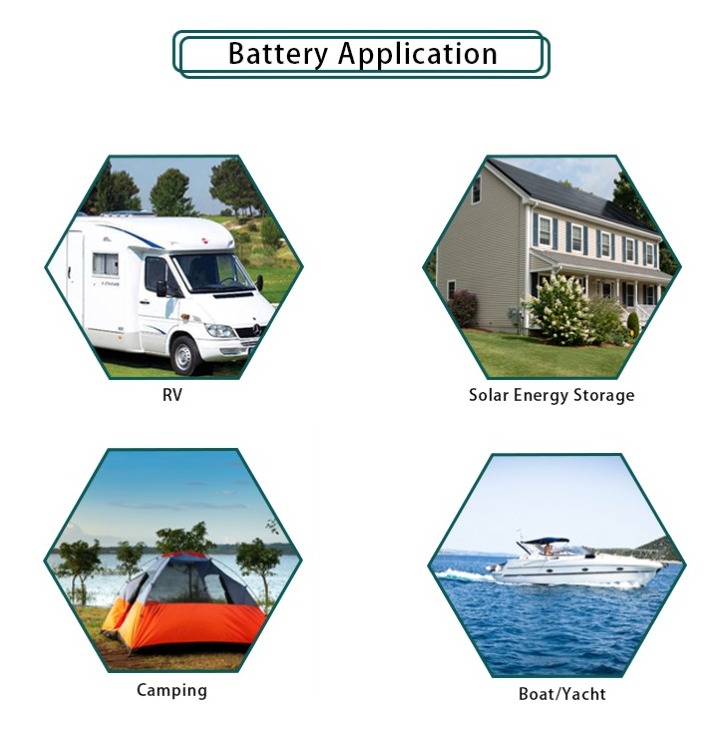
12V 100Ah Bluetooth Lithium Battery,Lithium Battery Rechargeable,Lithium Battery For Solar,Lifepo4 Battery 100Ah
ShenZhen UFO Power Technology Co., Ltd. , https://www.ufobattery.com